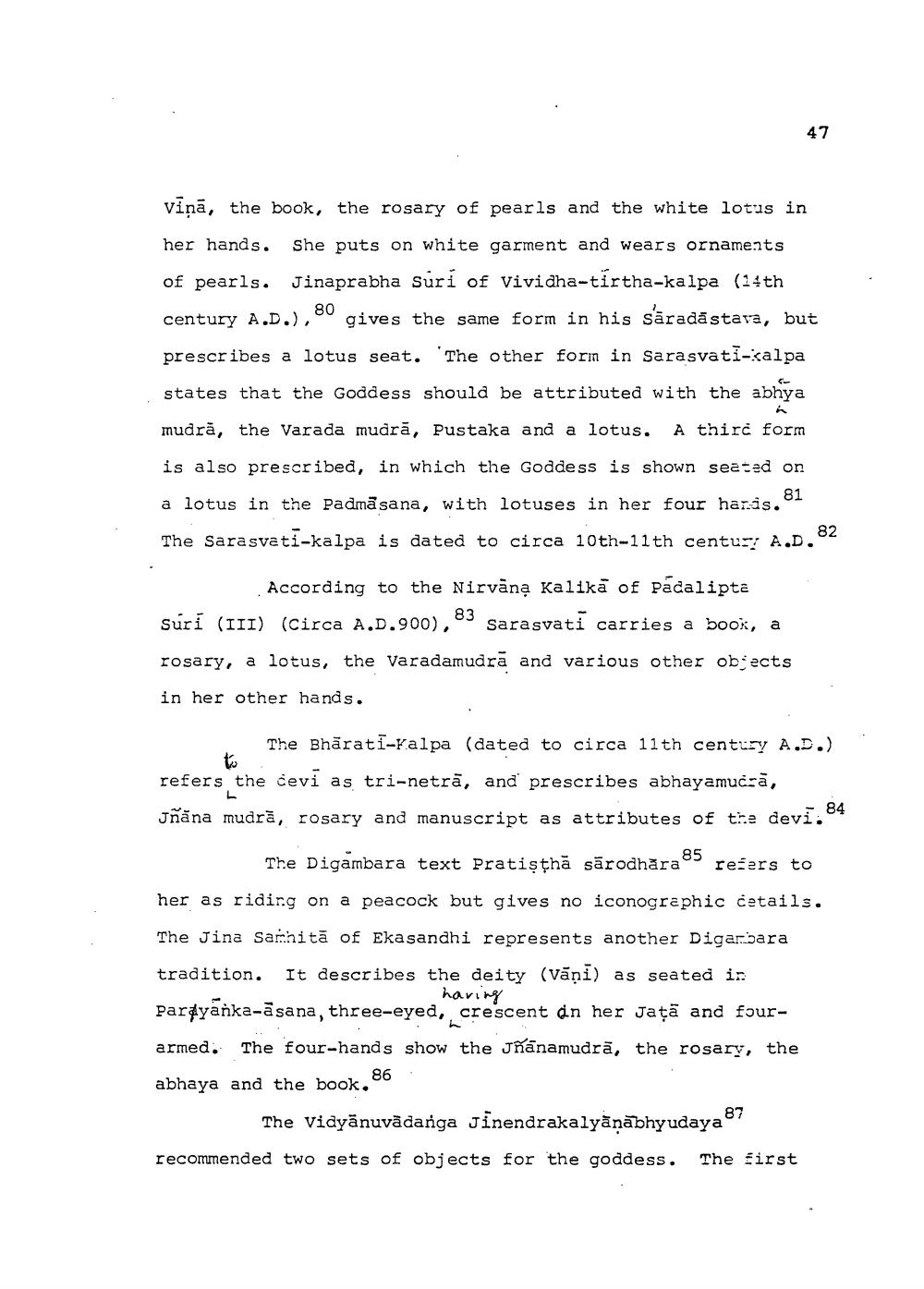________________
viņā, the book, the rosary of pearls and the white lotus in her hands. She puts on white garment and wears ornaments of pearls. Jinaprabha suri of Vividha-tírtha-kalpa (14th century A.D.), 80 gives the same form in his sāradāstava, but prescribes a lotus seat. The other form in Sarasvati-salpa
states that the Goddess should be attributed with the abhya
mudrā, the Varada mudrā, Pustaka and a lotus. A third form
is also prescribed, in which the Goddess is shown seated on a lotus in the Padmasana, with lotuses in her four haris.
The Sarasvati-kalpa is dated to circa 10th-11th centus A.D.
According to the Nirvana Kalikā of Padalipta Suri (III) (Circa A.D.900), 83 sarasvati carries a book, a rosary, a lotus, the Varadamudra and various other objects
in her other hands.
The Bhārati-ralpa (dated to circa 11th century A.D.)
refers the cevi as tri-netrā, and prescribes abhayamuczā, Jnāna mudra, rosary and manuscript as attributes of the devi.
The Digambara text Pratisthā sārodhāra85 refers to her as riding on a peacock but gives no iconographic catails.
The Jina Sarnitā of Ekasandhi represents another Digarbara
tradition. It describes the deity (vāņi) as seated in Parayanka-āsana, three-eyed,, crescent an her Jațā and four
haring
armed.
The four-hands show the Jnanamudrā, the rosary, the
abhaya and the book."
The Vidyānuvādanga Jinendrakalyānābhyudaya
recommended two sets of objects for the goddess.
The first




